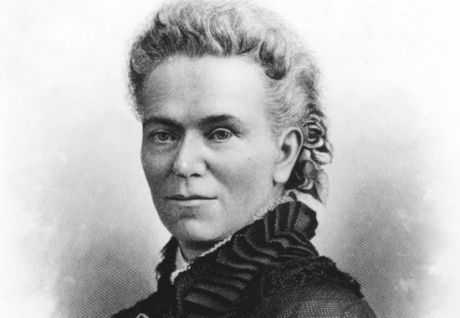Columns
You are here
First Wave Feminism: Indigenous Inspirations

November 26, 2012
Socialist feminism owes a deep debt to indigenous societies. This is where the idea originates that women could be, and sometimes are, the equals of men–an idea adopted in Frederick Engels’ Origin of the Family, Private Property and the State. But it was not only Marx and Engels who picked up the revolutionary concept of women’s liberation. The first wave of feminists who would advance women’s rights in the US were also students of the Haudenosaunee (Iroquois) nations.
Needless to say, this history has been buried. Many liberal and colonialist interpretations would claim that western democracy is the birthplace of feminism. But recent efforts among indigenous feminist scholars and their allies are helping to restore the early contributions of the Gantowisas, the “indispensable women” of the Haudenosaunee of Turtle Island and elsewhere internationally.
Feminists
Sally Roesch Wagner has documented these linkages in her 2001 study, Sisters in Spirit: Haudenosaunee (Iroquois) Influence on Early American Feminists. The name most commonly associated with the early American movement for women’s right to vote (suffrage) is Susan B. Anthony. Though women of nineteenth-century America had many privileges denied to enslaved African and indigenous women and men, white women were refused equal rights in the colonial settler project of the American state system.
Anthony, however, was not the only leading feminist of the time. And the battle for women’s suffrage was not the only issue. The famous 1848 Seneca Falls Convention that marked the first meeting for women’s rights would see the emergence of a triumvirate of women in the lead: Susan B. Anthony worked closely with Elizabeth Cady Stanton and Matilda Joslyn Gage. As Wagner summarizes:
“The ‘safe’ version of the women’s rights story is the victory of the 19th Amendment and the constitutional protection of women’s voting rights. This is the story of Susan B. Anthony and her life’s work…Equal in importance and reputation to Anthony during her lifetime, Stanton was nearly lost to history until the work of the Elizabeth Cady Stanton Foundation and the Women’s Rights National Historical Park in Seneca Falls restored her memory…. the Matilda Joslyn Gage Foundation carries the mission of returning Gage to her rightful place in history as well.”
Gage and Stanton, working in collaboration with Anthony, insisted that the vote was only one measure demanded of the women’s rights movement. The Christian Church and religion, the state, and capital were also subject to relentless challenge.
Inspiration
These were not socialist advocates, but radical democrats. They actively studied with and beside the societies of the Six Nations as inspiration to challenge the misogynist practices of daily life in mid-1800s US colonial life.
Anthony, Stanton and Gage collectively wrote the first three volumes of the History of Woman Suffrage, written between 1881 and 1886.
Gage in particular wrote extensively about the Haudenosaunee, which she maintained showed “in form of government, and in social life, reminiscences of the Matriarchate.” She detailed the lessons in newspaper articles for the New York Evening Post, and was working on a book on the subject that was still unfinished at the time of her death in 1898.
Gage detailed the contrasting realities of the lives of women and children among the settlers, and those among the indigenous population. On the social level, Euro-American life saw children as the sole property of the fathers, and husbands bearing the legal right, and religious responsibility, to ‘discipline’ wives.
Among the Haudenosaunee, children were members of the mother’s clan, and violence against women was not a normalized part of the culture. Rape or violence against women was treated as a serious crime. On a political level, while Euro-American settler society denied women the right to vote, among the Haudenosaunee women were responsible for selecting the chief, held key political positions, and enforced consensus decision-making practices where women were equal participants.
Realities
These realities challenged the basic notions of the era, which treated the Euro-American colonists as ‘civilized’, and the indigenous peoples as ‘savages’. Wagner summarizes the extreme sexism of early American society in this period:
“The forefathers looked with disdain on anything British as they formed their new government–until it came to forcing women into their place. Then the men looked to England for their model. The European tradition of church and law placed women in the role of property.”
Though there were efforts to ameliorate this pattern by those such as Thomas Paine, the first major revolutionary figure to call for women’s equal rights in the new United States, this view was not generalized. The oppression of women was particularly enshrined once women became married. Upon marriage, women relinquished even minimal legal rights, and they and their children became the legal property of men.
The legacy of these early feminists is mixed, as their main project was compromised by their class position. Instead of seeking a new world of full equality, they ended up fighting for equality with men in an oppressive, racist society.
But for socialists today, there is a different way to read this history. The resistance and voice of indigenous feminism continues to serve as an inspiration. Understanding the rightful place of indigenous society in the liberal democratic feminist movement is important in carrying forward a movement in the present, toward a new and better world free of racism, sexism and colonial oppression.
Section:
- Log in to post comments










